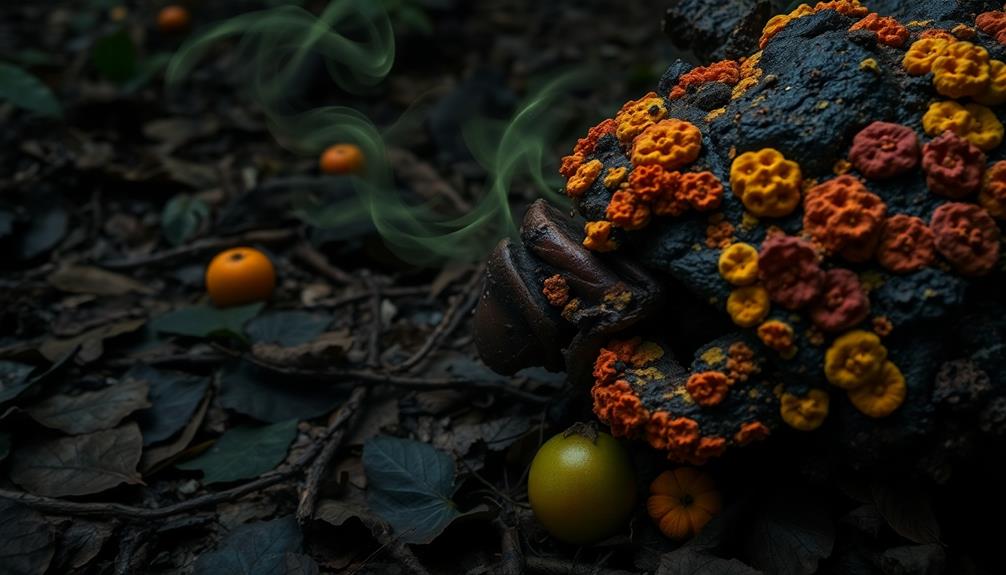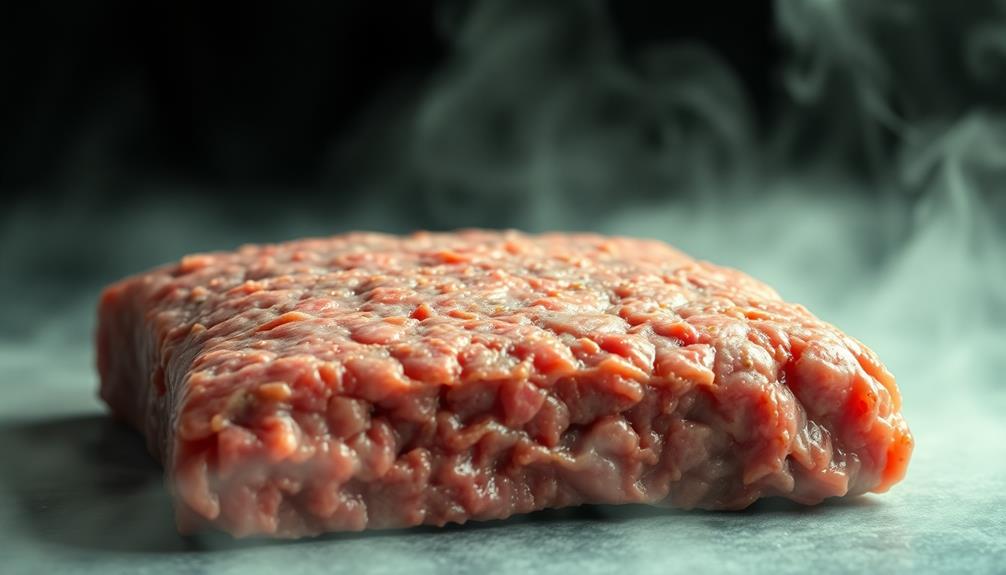Decomposition smells are a powerful mix that can surprise you! You might notice a scent that's like rotting food or even spoiled eggs at first. As the process goes on, even stronger smells come out, like cadaverine and putrescine. These odors grow more intense in warm and humid places. Imagine walking into a room that hasn't had fresh air for a while—yikes! Some people find these smells distressing because they remind them of death, but understanding them helps you learn about nature's cycle. Curious about how these smells affect our environment? There's even more to explore!
Key Takeaways
- Decomposition odor is a potent mix of rotting flesh and spoiled food, often described as shocking and unpleasant.
- Initial smells include hydrogen sulfide, resembling rotten eggs, with stronger odors developing as decay progresses.
- Key compounds contributing to the smell are cadaverine, putrescine, skatole, indole, and dimethyl disulfide.
- Environmental factors like temperature and humidity intensify the decomposition odor, especially in enclosed spaces.
- Lingering odors can remain in porous materials, requiring specialized cleaning techniques to fully remove them.
Introduction
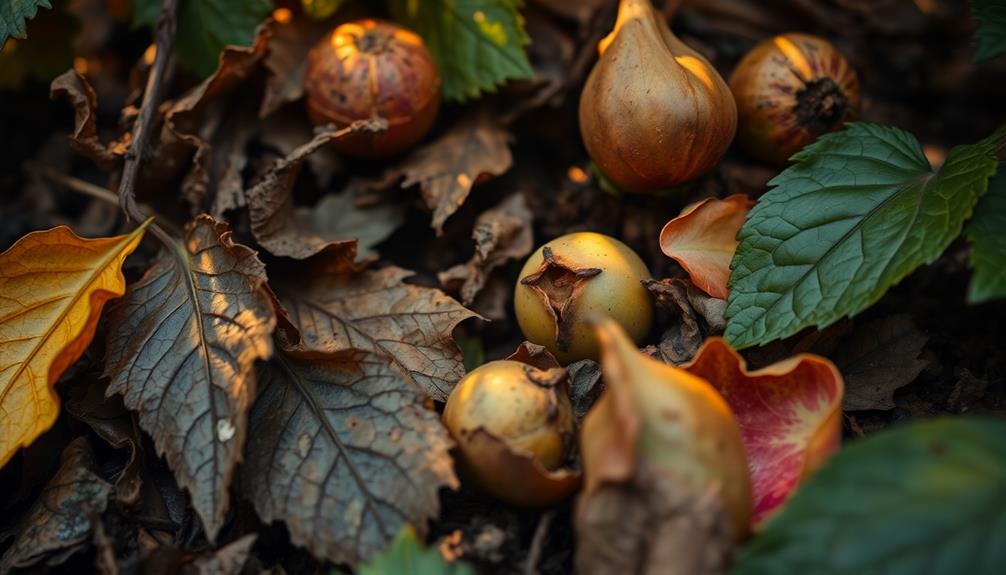
Decomposition odor is one of the most potent and unsettling smells you might encounter. You might wonder what causes this strange and foul smell. Well, it all comes down to gases released when organic matter breaks down.
When a body starts to decompose, it releases compounds like cadaverine and putrescine, which contribute to that unmistakable dead body smell.
Different stages of decomposition bring different smells. The putrefaction stage, for instance, is when things get really intense. It's not just about the smell, though. You might find it hard to describe because it can stir up strong emotions.
Environmental factors play a big role too. Changes in temperature and humidity can make the smell even stronger. Plus, insects often come around, adding to the mix.
If you ever face a situation where decomposition has occurred, you might need professional help. That's because porous materials can soak up the smell and hold onto it, even after the body is gone.
Understanding decomposition smells can be a fascinating yet challenging topic, but knowing more can help you appreciate how nature works!
Description of the Smell
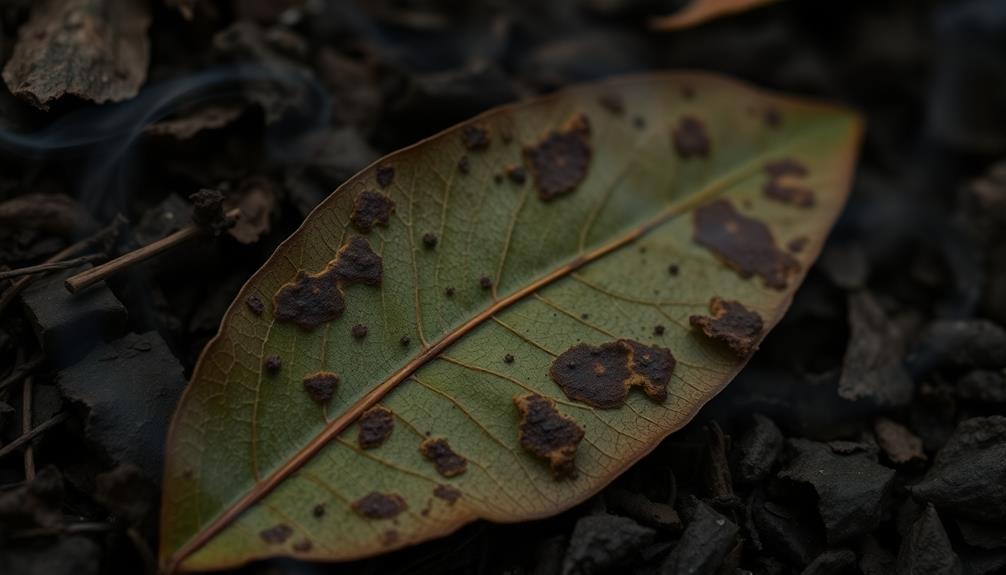
The odor of decay grabs your attention with its overpowering and repulsive nature, often described as a mix of rotting flesh and spoiled food. You might catch a whiff of the smell of death, and it can be quite shocking! This smell comes from a decomposing body breaking down, releasing various chemical compounds that create an unforgettable aroma.
As the decomposition process continues, the scent changes. At first, you might notice a strong odor reminiscent of rotten eggs, thanks to hydrogen sulfide.
As time passes, you'll encounter even more unpleasant smells, like cadaverine and putrescine, which come from the breakdown of proteins. You could even detect earthy and fecal-like notes from skatole and indole, or a hint of garlic from dimethyl disulfide.
The intensity of these odors can vary, too! High temperatures and humidity can make them even stronger.
Even after the body is gone, the lingering smells can stick around, especially in porous materials. Specialized cleaning might be needed to get rid of that stubborn odor completely.
It's a fascinating, though rather unpleasant, part of nature!
Source and Composition

Understanding the source and composition of decomposition smells reveals the intricate processes at play. When living things die, their bodies break down, creating what we call the decomposition process. Microorganisms, like bacteria, play a huge role in this. As they break down proteins, they release gases such as hydrogen sulfide, cadaverine, and putrescine. These gases contribute to the smell of rotting, which many find unpleasant.
Other key players include volatile organic compounds. For instance, skatole gives off a fecal odor, while indole reminds some of mothballs. There's also dimethyl disulfide, which has a garlic-like smell that attracts blowflies, and trimethylamine, known for its fishy scent. Isn't it fascinating how different odors tell us about what's happening?
The composition of these smells can change, too! It depends on the type of bacteria involved, the stage of decomposition, and even the temperature and humidity around the body.
A study found 452 organic compounds emitted during this process! Understanding these elements helps us appreciate the complex nature of decomposition and the smells that come with it.
Typical Scenarios or Environments
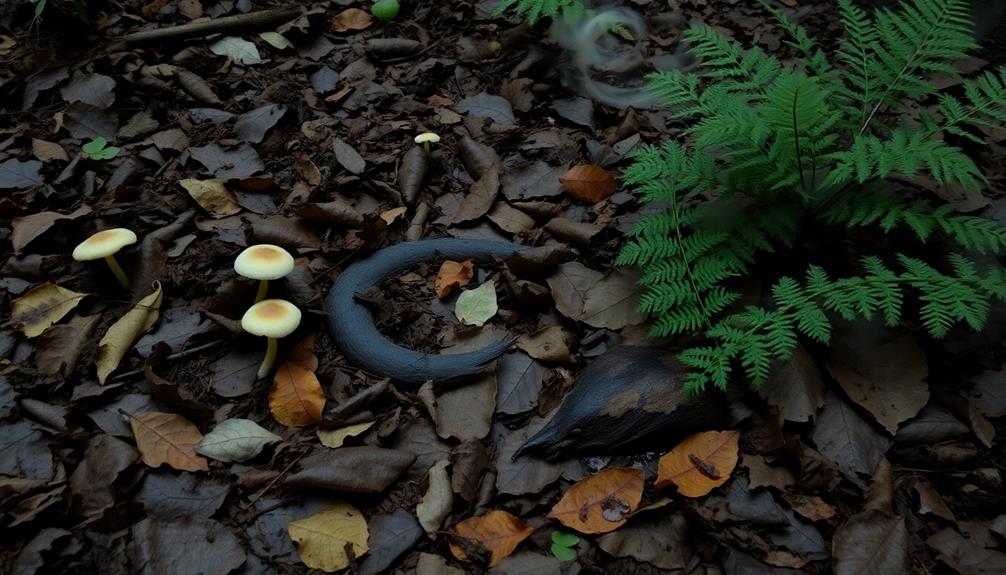
In enclosed spaces like attics or basements, you might notice decomposition odors becoming especially pronounced due to limited ventilation.
These smells come from the breakdown of organic matter, like dead bodies. In these tight areas, gases like hydrogen sulfide can build up, making the odors even stronger. As these gases accumulate, they exacerbate the stench by creating a potent mixture of foul-smelling compounds. It’s important to note that not all gases have a distinct odor; for instance, it’s difficult to describe what carbon dioxide smells like, as it is generally odorless to humans. However, the overwhelming presence of sulfur-based compounds often masks any other emissions, contributing to the pervasive and unpleasant smell.
Outdoors, the situation changes a bit. Fresh air helps decomposition smells dissipate quickly, but they can still attract scavengers and insects, signaling that something's amiss.
In urban settings, where houses are close together, decomposition odors can sneak through shared walls or ventilation systems, making them hard to ignore.
If you're near a lake or river, you might notice a different scent when bodies decompose underwater. Aquatic bacteria influence the odor, creating a unique profile.
Also, keep in mind that warmer climates speed up decomposition. In hot weather, those recognizable smells can appear much quicker than in cooler areas.
Emotional or Cultural Associations
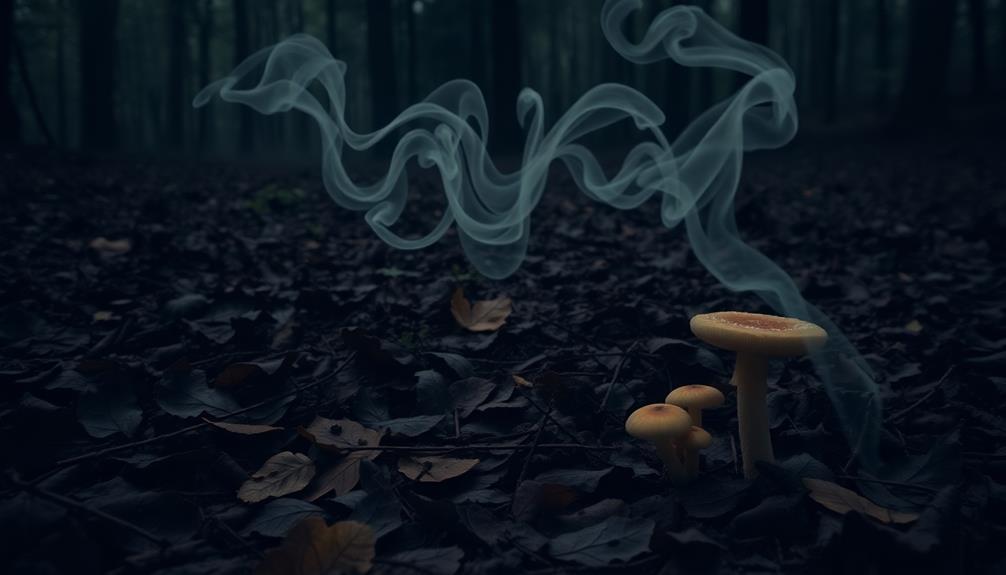
Decomposition odors evoke strong emotional reactions, often tied to personal experiences with death and loss. When you catch a whiff of that distinct smell, it might remind you of a time you faced sadness or grief. This is because the smell of decomposition is powerful and can take you back to those feelings.
Culturally, the associations with this smell can vary. In some societies, the scent of decay is seen as a natural part of life. People may even honor it during mourning rituals, understanding it symbolizes the cycle of life and death.
In other cultures, however, the smell might feel taboo or distressing, making people uncomfortable.
You might find it interesting that literature and art often use the smell of decomposition as a metaphor. It represents decay and the inevitability of death, influencing how we think about these topics.
Health or Safety Considerations

The strong, pungent odors associated with decomposition can pose serious health risks, making it crucial for anyone who encounters them to take appropriate precautions.
When organic matter breaks down, it releases harmful gases like hydrogen sulfide and ammonia. Breathing in these gases can trigger respiratory issues, such as wheezing, coughing, and throat irritation.
If you're involved in cleanup or investigation of a decomposition site, wearing personal protective equipment (PPE) like gloves, masks, and respirators is essential. These items help minimize health risks and keep you safe from dangerous pathogens found in bodily fluids and tissues.
Prolonged exposure to these odors may lead to allergic reactions, including skin rashes or hives, along with watery eyes and respiratory discomfort.
Awareness of these health risks is crucial for everyone handling biohazard situations.
Final Thoughts

After encountering the intense odors of decomposition, it's essential to recognize the profound impact they can have on both health and the environment. The smell, often a mix of rotting flesh and foul gases, can be overwhelming.
It's important to remember that these odors come from the breakdown of the human body, a natural process that happens over time.
During the active decay stage, the scent becomes even stronger. You might notice hints of skatole, which smells like feces, or indole, reminiscent of mothballs.
These odors don't just disappear after the body is gone. They can linger in fabrics and carpets, needing special cleaning techniques to remove them completely.
Environmental factors like temperature and humidity play a big role too. In warmer, humid conditions, the smell of decomposition can become even more potent.
While it can be unsettling, understanding these smells can help you deal with the situation better. Learning about decomposition and its effects teaches us about life and the natural cycle.
Frequently Asked Questions
What Does a Decomposing Smell Like?
When you encounter the smell of decomposition, you're likely to notice an overwhelming stench reminiscent of rotten eggs, fish, and earthy odors. It's a combination of gases that's truly unforgettable and disturbing.
What Stage of Decomposition Smells Bad?
During decomposition, the putrefaction and active decay stages smell the worst. You'll notice strong, foul odors from bacteria breaking down tissues, releasing gases like hydrogen sulfide and compounds associated with rotting flesh and feces.
How Far Away Can You Smell a Decomposing Body?
You can often smell a decomposing body from several hundred yards away, depending on factors like temperature and wind direction. In ideal conditions, some trained dogs can detect the odor from over a mile away.
Does Human Decomposition Smell Different Than Animal?
Yes, human decomposition does smell different than animal decomposition. You'll notice stronger odors from cadaverine and putrescine in humans, while unique esters contribute to a more complex scent profile compared to that of animals.
